(!)Due to Microsoft's end of support for Internet Explorer 11 on 15/06/2022, this site does not support the recommended environment.
63,000 Stock items for Same Day Shipping
63,000 Item Stok untuk Pengiriman di Hari yang Sama
Search by Category / Brand
Pencarian dengan
Kategori / Merek
Search by Category Pencarian dengan Kategori
- Automation Components
A wide variety of standard and configurable components for factory automation engineers in industries such as automotive, semiconductor, packaging, medical and many more.
- Linear Motion
- Rotary Motion
- Connecting Parts
- Rotary Power Transmission
- Motors
- Conveyors & Material Handling
- Locating, Positioning, Jigs & Fixtures
- Inspection
- Sensors, Switches
- Pneumatics, Hydraulics
- Vacuum Components
- Hydraulic Equipment
- Discharging / Painting Devices
- Pipe, Tubes, Hoses & Fittings
- Modules, Units
- Heaters, Temperature Control
- Framing & Support
- Casters, Leveling Mounts, Posts
- Doors, Cabinet Hardware
- Springs, Shock Absorbers
- Adjusting, Fastening, Magnets
- Antivibration, Soundproofing Materials, Safety Products
- Fasteners
A good selection of accessories such as screws, bolts, washers and nuts that you may need for your daily engineering usage.
- Materials
Browse industrial materials ranging from heat insulating plates, sponges, to metal and plastic materials in different sizes to meet your various applications.
- Wiring Components
A wide variety of wiring parts for connecting and protecting control and PC parts including Connectors, Cables, Electric Wires, Crimping Terminals and more.
- LAN Cables / Industrial Network Cables
- Cables by Application
- Cables with Connectors
- RS232 / Personal Computers / AV Cables
- Wires/Cables
- Connectors (General Purpose)
- Crimp Terminals
- Zip Ties
- Cable Glands
- Cable Bushings/Clips/Stickers
- Screws/Spacers
- Cable Accessories
- Tubes
- Protection Tubes
- Ducts/Wiremolds
- General Purpose Tools
- Dedicated Tools
- Soldering Supplies
- Electrical & Controls
A wide variety of controls and PC parts for electrical engineers including Controls, Powers, PC parts and more.
- Cutting Tools
A wide variety of cutting tools for many uses and work materials including End Mills, Drills, Cutters, Reamers, Turning Tools and more.
- Carbide End Mills
- HSS End Mills
- Milling Cutter Inserts/Holders
- Customized Straight Blade End Mills
- Dedicated Cutters
- Turning Tools
- Drill Bits
- Screw-Hole-Related Tools
- Reamers
- Chamfering / Centering Tools
- Fixtures Related to Cutting Tools
- Step Drills
- Hole Saws
- Clean Key Cutters
- Core Drills (Tip Tools)
- Magnetic Drilling Machine Cutters
- Drill Bits for Electric Drilling Machines
- Woodworking Drill Cutters
- Drills for Concrete
- Processing Tools
A wide variety of tools and supplies used in processing including Machine Tools, Measurement Tools, Grinding and Polishing Supplies and more.
- Material Handling & Storage
A wide variety of goods used in shipment, material handling and warehouse including Tape supplies, Stretch film, Truck, Shelf, Crane and more.
- Tape Supplies
- Cushioning Materials
- Stretch Films
- Cardboard
- Plastic Bags
- PP Bands
- Magic Tapes / Tying Belts
- Rubber Bands
- Strings/Ropes
- Cable Ties
- Tags
- Labelers
- Unpacking Cutters
- Packing Support Equipment
- Cloth Sheets for Packing
- Conveyance/Dolly Carts
- Tool Wagons
- Tool Cabinets / Container Racks
- Lifters / Hand Pallets
- Container Pallets
- Storage Supplies
- Shelves/Racks
- Work Benches
- Suspended Clamps/Suspended Belts
- Jack Winches
- Chain Block Cranes
- Bottles/Containers
- Bicycle Storage Area
- Safety & General Supplies
A large variety of goods for every kind of factories and offices including Protection items, Cleaning supplies, sanitations, office supplies and more.
- Lab & Clean Room Supplies
A large variety of items used in R&D and Clean Room including research Equipment, Laboratory Essentials, Analysis Supplies, Clean Environment-Related Equipment and more.
- Press Die Components
Choose from thousands of standard stamping die components including Punch & Die, Gas Springs, Guide Components, Coil Springs and many more.
- Plastic Mold Components
Browse our wide variety of mold components including Ejector Pins, Sleeves, Leader Components, Sprue Bushings and many more.
- Ejector Pins
- Sleeves, Center Pins
- Core Pins
- Sprue bushings, Gates, and other components
- Date Mark Inserts, Recycle Mark Inserts, Pins with Gas Vent
- Undercut, Plates
- Leader Components, Components for Ejector Space
- Mold Opening Controllers
- Cooling or Heating Components
- Accessories, Others
- Components of Large Mold, Die Casting
- Injection Molding Components
Browse our injection molding components including Heating Items, Couplers, Hoses and more.
- Injection Molding Machine Products
- Accessories of Equipment
- Auxiliary Equipment
- Air Nippers
- Air Cylinders
- Air Chuck for Runner
- Chuck Board Components
- Frames
- Suction Components
- Parallel Air Chuck
- Special Air Chuck
- Chemical for Injection Molding
- Mold Maintenance
- Heating Items
- Heat Insulation Sheets
- Couplers, Plugs, One-touch Joints
- Tubes, Hoses, Peripheral Components
- Komponen Mekanis
- Linear Motion
- Rotary Motion
- Connecting Parts
- Rotary Power Transmission
- Motors
- Conveyors & Material Handling
- Locating, Positioning, Jigs & Fixtures
- Inspection
- Sensors, Switches
- Pneumatics, Hydraulics
- Vacuum Components
- Hydraulic Equipment
- Discharging / Painting Devices
- Pipe, Tubes, Hoses & Fittings
- Modules, Units
- Heaters, Temperature Control
- Framing & Support
- Casters, Leveling Mounts, Posts
- Doors, Cabinet Hardware
- Springs, Shock Absorbers
- Adjusting, Fastening, Magnets
- Antivibration, Soundproofing Materials, Safety Products
- Sekrup, Baut, Washer, Nut
- Material
- Komponen Kabel
- LAN Cables / Industrial Network Cables
- Cables by Application
- Cables with Connectors
- RS232 / Personal Computers / AV Cables
- Wires/Cables
- Connectors (General Purpose)
- Crimp Terminals
- Zip Ties
- Cable Glands
- Cable Bushings/Clips/Stickers
- Screws/Spacers
- Cable Accessories
- Tubes
- Protection Tubes
- Ducts/Wiremolds
- General Purpose Tools
- Dedicated Tools
- Soldering Supplies
- Elektrikal & Kontrol
- Peralatan Pemotong
- Carbide End Mills
- HSS End Mills
- Milling Cutter Inserts/Holders
- Customized Straight Blade End Mills
- Dedicated Cutters
- Turning Tools
- Drill Bits
- Screw-Hole-Related Tools
- Reamers
- Chamfering / Centering Tools
- Fixtures Related to Cutting Tools
- Step Drills
- Hole Saws
- Clean Key Cutters
- Core Drills (Tip Tools)
- Magnetic Drilling Machine Cutters
- Drill Bits for Electric Drilling Machines
- Woodworking Drill Cutters
- Drills for Concrete
- Peralatan Produksi
- Penanganan Material & Penyimpanan
- Tape Supplies
- Cushioning Materials
- Stretch Films
- Cardboard
- Plastic Bags
- PP Bands
- Magic Tapes / Tying Belts
- Rubber Bands
- Strings/Ropes
- Cable Ties
- Tags
- Labelers
- Unpacking Cutters
- Packing Support Equipment
- Cloth Sheets for Packing
- Conveyance/Dolly Carts
- Tool Wagons
- Tool Cabinets / Container Racks
- Lifters / Hand Pallets
- Container Pallets
- Storage Supplies
- Shelves/Racks
- Work Benches
- Suspended Clamps/Suspended Belts
- Jack Winches
- Chain Block Cranes
- Bottles/Containers
- Bicycle Storage Area
- Perlengkapan Keamanan & Umum
- Perlengkapan Sanitasi & Lab
- Komponen Press Die
- Komponen Plastik Mold
- Ejector Pins
- Sleeves, Center Pins
- Core Pins
- Sprue bushings, Gates, and other components
- Date Mark Inserts, Recycle Mark Inserts, Pins with Gas Vent
- Undercut, Plates
- Leader Components, Components for Ejector Space
- Mold Opening Controllers
- Cooling or Heating Components
- Accessories, Others
- Components of Large Mold, Die Casting
- Komponen Injeksi Moulding
- Injection Molding Machine Products
- Accessories of Equipment
- Auxiliary Equipment
- Air Nippers
- Air Cylinders
- Air Chuck for Runner
- Chuck Board Components
- Frames
- Suction Components
- Parallel Air Chuck
- Special Air Chuck
- Chemical for Injection Molding
- Mold Maintenance
- Heating Items
- Heat Insulation Sheets
- Couplers, Plugs, One-touch Joints
- Tubes, Hoses, Peripheral Components
Search by Brand Pencarian dengan Merek
This translation is a Google translation Terjemahan ini adalah terjemahan Google
- Pembayaran dengan kartu kredit untuk sementara tidak tersedia karena kendala sistem.
Sementara waktu Anda dapat meggunakan metode Pembayaran di Muka atau QRIS.
Untuk informasi lebih lanjut, silakan hubungi Customer Service :
TEL: 021-8984-0008 E-mail: cs@misumi.co.id. WA: 08118984008.
Kami mohon maaf atas ketidaknyamanan yang terjadi.
Credit card payments are temporarily unavailable due to system issues. Meanwhile, you can use the Advance Payment method or QRIS. For further information, please contact Customer Service: TEL: 021-8984-0008 E-mail: cs@misumi.co.id. WA: 08118984008. We apologize for any inconvenience caused.
- Sehubungan dengan adanya Peraturan Baru Kementerian Perdagangan No.36 Tahun 2023 tentang Pembatasan Impor Barang, MISUMI Indonesia melakukan tindakan pencegahan. Lihat informasi detailnya di sini
Due to New Regulation of Ministry Of Trade No.36 of 2023 concerning retrictions on imports of goods, MISUMI Indonesia do precautions measure. See detail information here - Nomor telepon alternatif Kontak Layanan Pelanggan : 021-29182911| 021-29182991 | 021-29182997 | 021-29182998
Alternative telephone number Contact Customer Service: 021-29182911 | 021-29182991 | 021-29182997 | 021-29182998
Timing Belt and Pulleys
Sizing Timing Belts and Pulleys
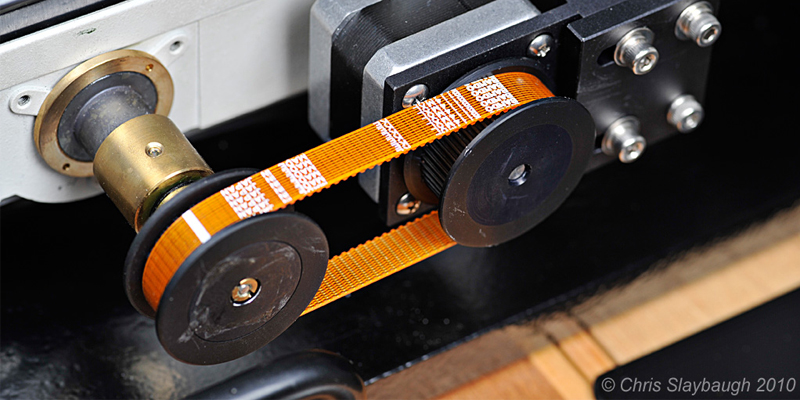
Timing Belt and Pulley Image from Photomacrography
MISUMI have been contacted by customers for question below :
Q : "Dear MISUMI Technical Support Team,
We are building a machine that has several shafts driven by stepper motors. These shafts need to be synchronized to each other, but at different speeds. We did some research and it looks like a timing belt system will solve our problem, but we don’t know how to proceed with selecting parts. Could you please provide some tips or recommendations?"
MISUMI is always happy to give advice on various products for machines that need to work in relation to the various parts.
A: With any synchronization project, it’s all about the timing. Let’s start with a brief introduction on timing belts, pulleys, and how they work together
A timing belt is used when the rotation of two different shafts need to be exactly linked. Normal power transmission belts and pulleys are smooth, so the belt can occasionally slip off track (one shaft would be turning while the other remains still). On the other hand, timing belts and pulleys have teeth, which lock the rotation of the shafts and prevent misalignment. In a car, the timing belt links the engine crankshaft to the valve camshaft, thereby making sure that the valves open and close at the correct times. If that belt tears or breaks a tooth, the valves can open at the wrong time and ruin the engine.
There are a lot of different variables for belt sizing – width, number of teeth (pitch), material, etc. Each manufacturer will have different recommendations based on your project’s specifications, taking into account shaft speeds, power transmission, environment, and other concerns. Take care not to needlessly oversize – a larger, stiffer belt can cause difficulties with smaller drive motors.
As with any belt and pulley system, you need to identify the rotation ratio between the shafts. For instance, if shaft #1 needs to spin twice as fast as shaft #2, you would have a 2:1 ratio. Once this ratio is calculated, you can then select the pulleys. Looking at the number of teeth on the pulley, find two that match your desired ratio. Continuing with our example, if we had a 16-tooth pulley on shaft #1, we would need a 32-tooth pulley on shaft #2.

Figure showing belt length from Nonstop Systems
The next tricky part of the design is figuring out the belt length. You need to know the distance between the centers of the two shafts and the pitch diameters of the two pulleys, which is usually specified by the manufacturer. Most belt manufacturers will provide an online calculator for finding lengths of their belts, but the following formulas can be used to calculate belt length:

If you need an exact measurement, you can use the following formula:

where:
- • C : Center to center distance between shafts
- • D1 : Pitch diameter of larger pulley
- • D2 : Pitch diameter of smaller pulley
Note that these formulas don’t take into consideration any pretension on the belt – most recommendations are for 1% – 8%. Belts are only made in certain lengths, so you may need to slightly adjust shaft spacing or pulley diameters to find one that works for you.
Now, all of your system components should be in place. We’ve identified the proper belt type based on the system requirements and manufacturer recommendations, sized the pulleys to the correct shaft ratio, and calculated the belt length.
Put everything together, and you’ve got a fine tuned machine which work perfectly.
Timing belt
-
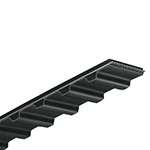
270H075G

-
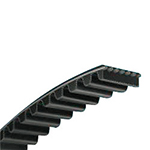
60S3M1050G

-
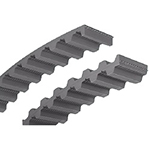
30T8012.7

-
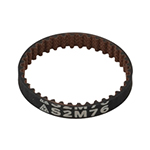
100S2M80G

-
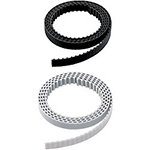
HTBO-S5M250-500

-

HTBN1000S5M-100

-
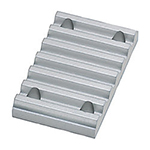
TBCR-S5M150

-

TTBU1000T10-250

 Need support regarding products ? Contact us, We ready to help you !
Need support regarding products ? Contact us, We ready to help you ! 
- Customer Service
-
- Adjust delivery date
- Change your ordering
- Give advice on How to use eCatalog
- Give advice on How to ordering online
- 021-8984-0008
- cs@misumi.co.id
- Technical Support
-
- Give advice on How to choose items
- Compare item code
- Item information
- Technical information/3D CAD
- 021-2918-1730
- tech-support.fv@misumi.co.id
See related content
- Timing Pulley, IdlersRecommendation Timing Pulley, Idlers from MISUMI.Available in many specifications.
- Timing beltPopular product of Timing Belt from MISUMI. Same day delivery is available.
- Round Belts, PulleysRecommendation Round Belt from MISUMI. Required length can be selected.
MISUMI 5 Benefits
Have you ever got a problem with ordering? Click here and let us help you!







 Automation Components
Automation Components
 Fasteners
Fasteners
 Materials
Materials
 Wiring Components
Wiring Components
 Electrical & Controls
Electrical & Controls
 Cutting Tools
Cutting Tools
 Processing Tools
Processing Tools
 Material Handling & Storage
Material Handling & Storage
 Safety & General Supplies
Safety & General Supplies
 Lab & Clean Room Supplies
Lab & Clean Room Supplies
 Press Die Components
Press Die Components
 Plastic Mold Components
Plastic Mold Components
 Injection Molding Components
Injection Molding Components